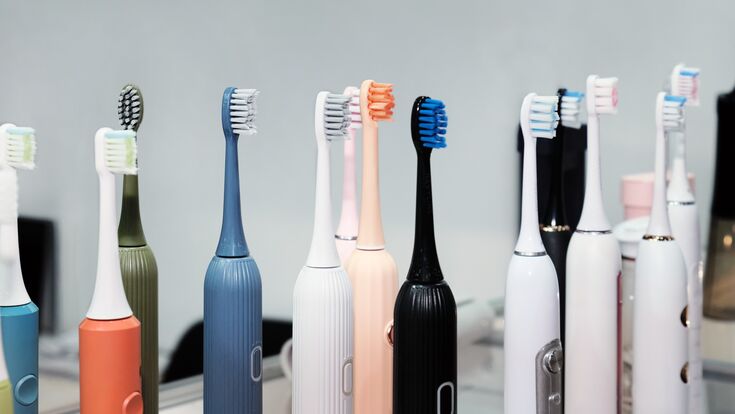E-Waste : Brushing off responsibility: How electric toothbrushes are quietly fueling the e-waste crisis

In the race toward a circular economy, few would peg the humble electric toothbrush as a major offender. Yet behind the sleek casing of these everyday devices lies a growing source of electronic waste—and a case study in how linear design thinking continues to undermine circular goals.
With more than 34 million users in the UK alone as of 2022, and millions more globally, electric toothbrushes have quietly become a significant contributor to e-waste. Their rise—driven by lower costs, aggressive marketing, and rapid product cycles—is adding pressure to a waste stream already spiraling out of control.
According to Expert Reviews, the UK alone disposes of around 2,266 tonnes of toothbrushes annually, encompassing over 212 million electric toothbrush heads and manual brushes. Yet despite their size, electric toothbrushes carry an outsized environmental burden—thanks to embedded electronics, composite materials, and the lithium-ion batteries sealed within.
Why electric toothbrushes are a circularity red flag
Electric toothbrushes embody many of the challenges facing circular product design today. Their typical construction includes:
- Non-recyclable composites: Hard plastics fused with metal components, adhesives, and molded electronics make disassembly difficult or impossible.
- Sealed batteries: Lithium-ion batteries are often encased and non-removable, making responsible recycling challenging and risky.
- Short lifespans: Devices are frequently discarded after only a few years—or sooner—due to breakage or consumer upgrades driven by feature creep (think app connectivity or multiple “cleaning modes”).
For circular economy professionals, these are clear signs of designing for disposal, not for longevity or circularity. As a result, many end up in landfills or incinerators, releasing toxins or contributing to the global pile of e-waste that topped 59.4 million tonnes in 2022, according to the Global E-waste Monitor. That’s the equivalent of more than 1.5 million 40-tonne trucks—enough to form a line around the planet.
Emma Armstrong, Sustainable Electronics Ambassador and Group Commercial Director at UK-based electronics firm In2tec, highlights the systemic issue: “Electric toothbrushes are less than £3 from some low-quality online retailers like Temu, so people are quick to replace them when they inevitably break. Meanwhile, gadget fans are tossing their perfectly fine model for the next generation, which boasts unnecessary phone apps and multiple ‘cleaning modes’.”
Lifecycle data and the case for modular design
Research from Trinity College Dublin backs these concerns with hard data. In a 2020 life cycle assessment (LCA) study - the LCA used to measure the environmental consequences of a healthcare product - Dr. Brett Duane and his team compared manual, bamboo, electric, and hybrid toothbrush designs to assess their environmental impacts over time.
“There are billions of toothbrushes used and discarded every year,” Dr. Duane said. “Our research shows that electric toothbrushes are actually harmful to the planet and the people involved in the manufacturing process and distribution.”
Electric toothbrushes ranked highest in terms of carbon footprint, resource extraction, and toxicity potential—largely due to electronics and batteries, but also because of manufacturing energy use and complex supply chains. The study advocated for reusable handle systems with replaceable heads made of recycled plastic as a practical alternative.
“The ideal toothbrush is one which uses plastic which is recycled in a continuous process,” Duane added. “We need a system where plastic toothbrushes can be collected like batteries and then recycled into new products.”
A better way forward?
Several companies—including SURI, Sustainable Tomorrow, Crescent Nest, Kaylaan, The Humble Co., and In2tec—are pioneering sustainable solutions in the electric toothbrush market by utilizing eco-friendly materials, modular designs, and innovative recycling technologies to reduce e-waste and promote product longevity.
Notably, In2tec has developed ReUSE® and ReCYCLE™ technologies, which enable printed circuit board assemblies (PCBAs) to be fully disassembled at end-of-life, facilitating component reuse and significantly reducing electronic waste.
In contrast to energy-intensive shredding or chemical extraction methods, In2tec’s closed-loop system can return components to the supply chain with zero-carbon recovery, aligning with circular economy ambitions around resource retention and lifecycle extension.
“Most toothbrushes are not designed to be reused or recycled and can end up in landfill after a few years if not a few months,” says Armstrong. “Recycling can only do so much – for real results, society needs to turn away from ewaste and embrace modular technology that ensures components are reused or repaired instead of being burned or buried.”
Turning the brush back on the system
The growing issue of electric toothbrush waste reflects broader design and policy gaps that continue to challenge circular ambitions. Tackling these problems at scale requires a systems-level shift—one that brings overlooked consumer electronics like personal care products into the fold of sustainable design and recovery practices.
Key strategies that could support this transition include:
- Embedding modular design principles in product development, making devices easier to repair, upgrade, or disassemble for reuse.
- Expanding Extended Producer Responsibility (EPR) frameworks to cover smaller electronics and hybrid products such as electric toothbrushes, e-cigarettes, and smart wearables.
- Encouraging certifications and labeling for disassembly-ready products, promoting transparency and recovery over destruction.
- Establishing targeted collection and recovery systems, ensuring that items like toothbrushes are diverted from landfill with the same urgency as batteries or phones.
- Accelerating adoption of circular electronics innovations, such as In2tec’s ReUSE® and ReCYCLE™ technologies, to decarbonize component recovery and support scalable circular infrastructure.
The electric toothbrush may seem like a small player in the global waste equation, but it highlights a deeper flaw in how everyday electronics are designed and disposed of. It’s also a reminder that meaningful change often starts with the most familiar objects—and that closing the loop on something as simple as a toothbrush can pave the way for more ambitious circular transitions across industries.

